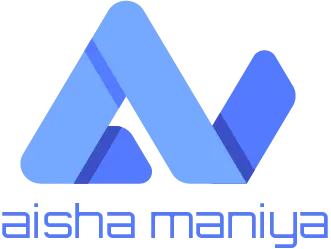latest news & blogs
5 Useful Web Design Strategies For A Donation Website

Creating a static website might seem straightforward, but it involves a variety of technologies and tools to ensure it is both functional and aesthetically pleasing. Static websites are often favored for their simplicity, speed, and security, making them ideal for personal blogs, portfolio sites, and small business websites. Here’s a look at the key technologies used in creating a static website design.
1. HTML (Hyper Text Markup Language)
HTML is the backbone of any website, static or dynamic. It provides the website's structure by defining the elements such as headings, paragraphs, images, and links.
Key Points:
- Provides the skeleton of the website.
- Defines the content structure.
- Uses tags and attributes to organize content.
2. CSS (Cascading Style Sheets)
CSS is used to control the presentation and layout of the website. It allows you to apply styles to HTML elements, such as colors, fonts, spacing, and positioning.
Key Points:
- Enhances the visual appeal of the website.
- Allows for responsive design.
- Can be written in plain CSS or using preprocessors like SASS or LESS
3. JavaScript
JavaScript is a scripting language that adds interactivity to a static website. Although static websites do not have server-side interactions, JavaScript can be used to create dynamic effects like sliders, forms, and animations.
Key Points:
- Adds interactivity and dynamic content.
- Can manipulate the DOM (Document Object Model).
- Often used with libraries and frameworks like jQuery, React, or Vue.js.
4. Static Site Generatorsg:
Static Site Generators (SSGs) like Jekyll, Hugo, and Gatsby are tools that build static websites from templates and markdown files. They offer a streamlined workflow and help manage content more efficiently.
Key Points:
- Converts templates into static HTML, CSS, and JavaScript files.
- Often integrates with version control systems like Git.
- Supports plugins and themes for extended functionality.
5. Version Control (Git)
Git is a version control system that helps track changes to your website's codebase. It allows multiple developers to collaborate and maintain the history of changes.
Key Points:
- Facilitates collaboration and version tracking.
- Integrates with hosting services like GitHub, GitLab, and Bitbucket.
- Essential for maintaining a reliable development workflow.
6. Hosting Platforms
Static Hosting Platforms like GitHub Pages, Netlify, and Vercel offer robust hosting solutions specifically designed for static websites. They provide easy deployment, continuous integration, and fast delivery.
Key Points
- Simplifies deployment and hosting.
- Offers features like custom domains, SSL, and CDN integration.
- Supports automated build and deployment processes.
7. Image Optimization Tools
Images are a crucial part of any website, and optimizing them is essential for performance. Tools like ImageOptim, TinyPNG, and Squoosh help reduce image sizes without compromising quality.
Key Points:
- Improves page load times.
- Reduces bandwidth usage.
- Maintains high visual quality.
8. Typography And Icon Libraries
Typography and icon libraries like Google Fonts, Font Awesome, and Material Icons provide a wide range of fonts and icons that can enhance the visual design of a static website.
Key Points:
- Enhances the visual design and usability.
- Offers a wide variety of styles and icons.
- Easy to integrate and use.
9. Responsive Design Frameworks
Frameworks like Bootstrap and Tailwind CSS help create responsive and mobile-friendly websites. They provide a grid system and pre-designed components that make it easier to develop a cohesive design.
Key Points:
- Ensures the website is mobile-friendly.
- Speeds up development with reusable components.
- Offers extensive customization options.
10. Code Editors And IDEs
A good code editor or Integrated Development Environment (IDE) is essential for writing clean and efficient code. Popular choices include Visual Studio Code, Sublime Text, and Atom.
Key Points:
- Provides syntax highlighting and code completion.
- Integrates with version control and other tools.
- Enhances productivity with extensions and plugins.
Conclusion
Building a static website involves a blend of technologies that together create a seamless and engaging user experience. From the foundational elements of HTML and CSS to the dynamic capabilities of JavaScript, and the powerful features of static site generators and hosting platforms, each component plays a vital role. By leveraging these technologies, you can create a static website that is not only beautiful but also fast, secure, and efficient.
